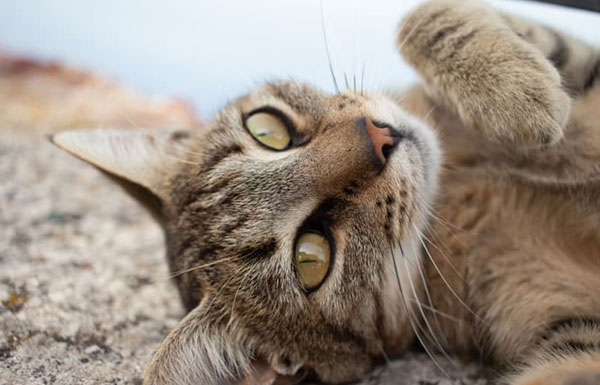One day, my sweet little companion stopped meeting my eyes. Her soft purrs turned into odd growls. At first, I thought she was just having a bad day, but something felt deeply wrong. Sadly, I learned too late that these were signs of a deadly illness.
If you’ve ever noticed strange changes in your cat, it’s time to listen closely. Cats with rabies can start with subtle signs. But this disease moves fast, and it’s always fatal once symptoms appear.
You love your pet. So let’s talk about how to spot the warning signs, what to do next, and how to protect the ones you love.
What Does Rabies Do to a Cat’s Body?
Rabies is a virus that attacks the brain and nerves. It spreads when an infected animal bites another. In cats, it can change everything about how they move, act, eat, or even look at you.
Once the virus reaches the brain, your cat starts showing signs. Cats with rabies often exhibit confused, scared, or angry behaviour for no apparent reason. These changes occur rapidly and worsen each day.
Early Signs of Rabies in Cats
In the beginning, it’s easy to miss. You may notice your cat hiding more or acting withdrawn. Some show restlessness or mild fear. But don’t brush these off.
Here’s how to diagnose the problem at an early stage:
- Sudden change in personality
- Avoiding touch or hiding
- Mild aggression or unease
- Low appetite
These may seem small, but they matter. You know, your cat. Trust that instinct if something feels off.
The Aggressive Phase: When Things Escalate
As the virus spreads, the changes become dramatic. Cats with rabies behaviour may hiss, bite, or attack without warning, even if they were once gentle.
Common symptoms at this stage include:
- Sudden aggression toward people or pets
- Constant pacing or restlessness
- Growling or loud, odd meowing
- Scratching or biting out of nowhere
- Wide pupils, staring, or seeming confused
Even the most loving cat can turn aggressive once infected. That’s why it’s essential to watch for changes, not just bad behaviour.
Foaming, Drooling, and Muscle Changes
Another red flag is how your furry companion looks physically. These symptoms often include:
- Heavy drooling
- Foam around the mouth
- Stiff legs or wobbling
- Trouble swallowing
- Seizures or twitching
When the virus hits the muscles, your feline can’t control its body anymore. The kind, graceful animal you knew may now stumble or struggle to move. It’s heartbreaking, but it’s a key sign.
Can a Cat with Rabies Survive?
It may sound disturbing to you, but rabies is fatal. There is no specific treatment for rabid animals. However, if your cat has been vaccinated and gets bitten, a vet might administer a booster shot quickly to prevent the virus from spreading.
What If an Infected Cat Bites You?
If a cat with rabies bites or scratches you, call your doctor immediately. The virus can pass through broken skin or open wounds. Even if the kitty seems healthy, don’t wait because it spreads quietly before it strikes.
How Do Cats Catch Rabies?
Cats usually contract rabies from wild animals, such as foxes, raccoons, or bats. The more time your cat spends outside, the higher the risk.
Unvaccinated cats are at the most risk. If a wild animal bites them, the virus can grow in their body quietly for weeks or even months.
Can a friendly cat have rabies? Yes. They might look fine at first, but once the virus takes hold, things change fast.
Recognizing the Final Stages
In the end, signs of rabies in cats become severe. Your kitty may collapse, stop eating, or stop responding to you at all. Some cats fall into a coma. Death usually follows within a few days.
It’s painful to think about. But knowing these symptoms helps you act faster and avoid more suffering.
Protecting Your Cat and Yourself
Here’s what you can do:
- Vaccinate your cute friend on schedule
- Keep your kitty indoors as much as possible
- Avoid contact with wild animals
- Watch for early behaviour changes
- If bitten, call your vet immediately
Conclusion
Rabies in cats is deadly, but early action saves lives. Trust your gut. Know the signs. Protect the ones you love before it’s too late.
